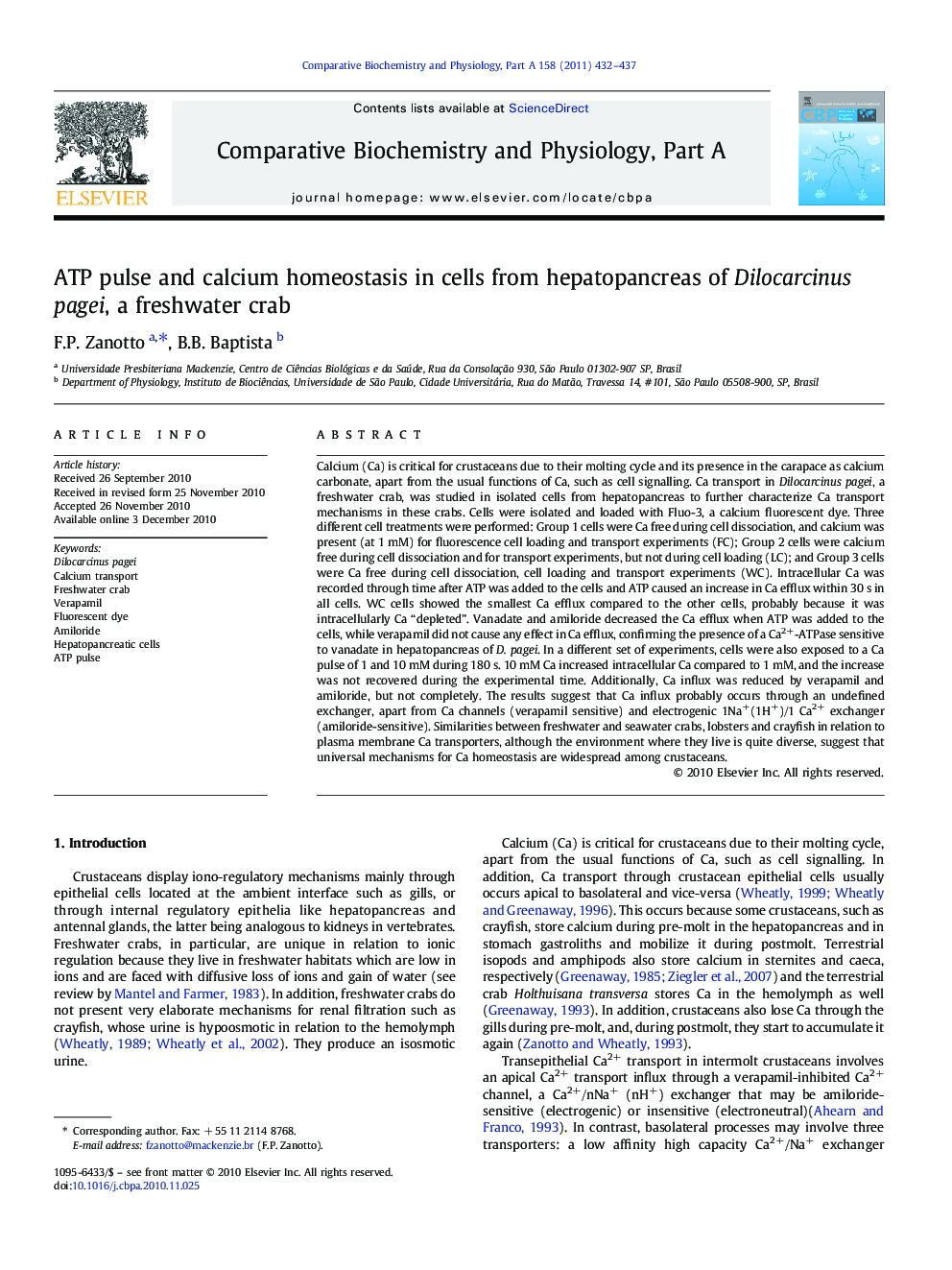| کد مقاله | کد نشریه | سال انتشار | مقاله انگلیسی | نسخه تمام متن |
|---|---|---|---|---|
| 10819015 | 1060327 | 2011 | 6 صفحه PDF | دانلود رایگان |
عنوان انگلیسی مقاله ISI
ATP pulse and calcium homeostasis in cells from hepatopancreas of Dilocarcinus pagei, a freshwater crab
دانلود مقاله + سفارش ترجمه
دانلود مقاله ISI انگلیسی
رایگان برای ایرانیان
کلمات کلیدی
موضوعات مرتبط
علوم زیستی و بیوفناوری
بیوشیمی، ژنتیک و زیست شناسی مولکولی
زیست شیمی
پیش نمایش صفحه اول مقاله

چکیده انگلیسی
Calcium (Ca) is critical for crustaceans due to their molting cycle and its presence in the carapace as calcium carbonate, apart from the usual functions of Ca, such as cell signalling. Ca transport in Dilocarcinus pagei, a freshwater crab, was studied in isolated cells from hepatopancreas to further characterize Ca transport mechanisms in these crabs. Cells were isolated and loaded with Fluo-3, a calcium fluorescent dye. Three different cell treatments were performed: Group 1 cells were Ca free during cell dissociation, and calcium was present (at 1Â mM) for fluorescence cell loading and transport experiments (FC); Group 2 cells were calcium free during cell dissociation and for transport experiments, but not during cell loading (LC); and Group 3 cells were Ca free during cell dissociation, cell loading and transport experiments (WC). Intracellular Ca was recorded through time after ATP was added to the cells and ATP caused an increase in Ca efflux within 30Â s in all cells. WC cells showed the smallest Ca efflux compared to the other cells, probably because it was intracellularly Ca “depleted”. Vanadate and amiloride decreased the Ca efflux when ATP was added to the cells, while verapamil did not cause any effect in Ca efflux, confirming the presence of a Ca2+-ATPase sensitive to vanadate in hepatopancreas of D. pagei. In a different set of experiments, cells were also exposed to a Ca pulse of 1 and 10Â mM during 180Â s. 10Â mM Ca increased intracellular Ca compared to 1Â mM, and the increase was not recovered during the experimental time. Additionally, Ca influx was reduced by verapamil and amiloride, but not completely. The results suggest that Ca influx probably occurs through an undefined exchanger, apart from Ca channels (verapamil sensitive) and electrogenic 1Na+(1H+)/1 Ca2+ exchanger (amiloride-sensitive). Similarities between freshwater and seawater crabs, lobsters and crayfish in relation to plasma membrane Ca transporters, although the environment where they live is quite diverse, suggest that universal mechanisms for Ca homeostasis are widespread among crustaceans.
ناشر
Database: Elsevier - ScienceDirect (ساینس دایرکت)
Journal: Comparative Biochemistry and Physiology Part A: Molecular & Integrative Physiology - Volume 158, Issue 4, April 2011, Pages 432-437
Journal: Comparative Biochemistry and Physiology Part A: Molecular & Integrative Physiology - Volume 158, Issue 4, April 2011, Pages 432-437
نویسندگان
F.P. Zanotto, B.B. Baptista,